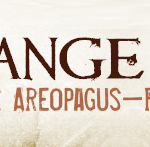This is a guest post, part of a series of guest posts addressing the question of whether we can discern purposefulness in the natural world. As such the opinions expressed below are highly likely not to reflect my opinions, as you’re sure to hear in more detail later this week.
Today’s post is by Lukas who has previously blogged at Mo-dernity, Mo-Problems.
In response to Leah’s post, I pointed to the article Anthropic Coincidences and put forward the following argument:
- Assuming careful investigation, we are able to discern purposefulness, and from that to infer a purposeful agent.
- Careful investigation has demonstrated that the universe appears to have been created purposefully.
- Therefore the universe was created by a purposeful agent.
There are numerous objections to this argument, but the subsequent discussion was mainly about question #1. We weren’t able to agree about whether we could discern purposefulness and infer a purposeful agent.
How do we observe something and go on to discern purpose? Our investigation must be properly thorough and must consider alternative possibilities. It is very easy to find cases where people wrongly inferred a purposeful agent. For example, early radio astronomers thought that they might be receiving transmissions from alien life. Further investigation showed that the radiation was coming from a pulsar, not from an alien civilization.
Similarly, biological evolution can produce results that look as though they are the product of design. As Charles Darwin wrote, “The old argument of design in nature, as given by Paley, which formerly seemed to me so conclusive, fails, now that the law of natural selection has been discovered. We can no longer argue that, for instance, the beautiful hinge of a bivalve shell must have been made by an intelligent being, like the hinge of a door by man. There seems to be no more design in the variability of organic beings and in the action of natural selection, than in the course which the wind blows. Everything in nature is the result of fixed laws.” At one time we thought that the complexity of biological life could only be explained by reference to a Creator God, but further investigation showed that this view was incorrect.
How can we be certain that something is really designed? I don’t think we can ever be truly certain, but in our day-to-day lives we do this all the time – when we find a note on our refrigerator, we infer that it was written by someone and didn’t just end up there by chance. We hear music and infer a musician. There is no algorithm for distinguishing what is the product of design from what is the product of fixed laws; instead we consider both possibilities and decide which is more reasonable.
One might also argue that in our day-to-day experience we can infer design, but that we cannot reason similarly with regard to the universe a whole. For example, Leah commented, “I really don’t think anyone has sufficient data to back reason about how unlikely such a universe is from the set of all possible worlds or all possible physically regular worlds, etc. The only datum we have is the existence of this world and our knowledge of its laws.” To rephrase: you cannot start calculating probabilities until you have made enough observations in order to get a sense of the distribution. But we only have one universe, so we cannot get a sense of the distribution. If this objection is correct, that it would be impossible to reason from any conceivable fact about any conceivable universe to a designer. For example, if we looked into space and saw that the stars spelled out the words, “Hello, this is God,” we could respond, “We can’t back reason about the likelihood of such things. Perhaps there are trillions of universes and we just got lucky and ended up in the one universe with an apparent message from God written in the stars.”












